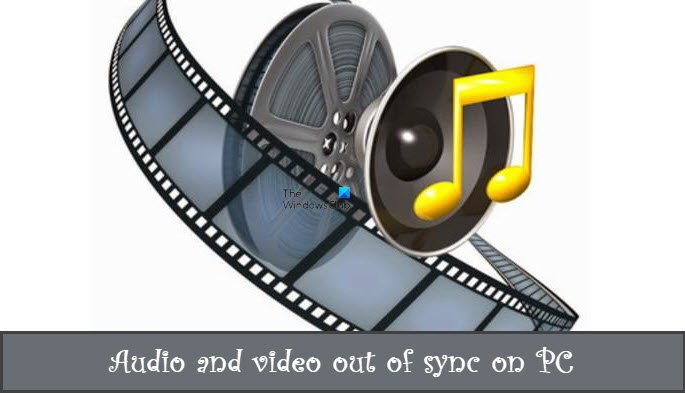Why is my audio and video out of sync?
The reasons can be many. It could be a corrupted media file, outdated graphics drivers, changed Windows settings, or maybe your media player needs to be repaired.
Fix Audio and Video out of sync on Windows PC
To fix this issue, we suggest you try the following solutions: Let’s see how you can do it.
1] Update your graphics driver
You may be experiencing video syncing issues on your Windows computer due to the corrupted or outdated graphics driver. To fix this issue, update your graphics driver.
2] Change the audio format of your device
Changing the audio format of the device is one of the ways to troubleshoot the audio and video syncing issues on Windows systems.
The following instructions will guide you on how to do that: This should fix the audio syncing issues with video on Windows OS.
3] Disable the “Allow applications to take control over this device” option
If the above method does not fix the audio and video syncing issue on your device, we suggest you disable the “Allow applications to take control over this device” option. You will find this option under the Advanced settings of your speaker. To open your speaker’s Advanced settings, follow the first six steps described above.
4] Turn off Hyper-V
Some users were experiencing this issue because of the Hyper-V service running in the background. If a virtual machine runs in the background, it continuously uses the CPU cores, which affects the performance of your system. Hence, turning off the Hyper-V may fix the issue.
5] Disable Fast Startup
According to the feedback of some affected users, disabling the Fast Startup in Windows 10 can fix the issue. You can also try it. The Fast Startup boots a computer faster than the normal mode. Though it is a useful feature that reduces the boot-up time in Windows 10 computers, sometimes, it may create issues.
6] Drop frames and enable DirectX Video Acceleration (only for Windows Media Player)
If the issue is occurring in Windows Media Player, dropping the frames and enabling the DirectX Video Acceleration may fix it.
The steps to do this are as follows: Close the Windows Media Player and launch it again. This should help.

